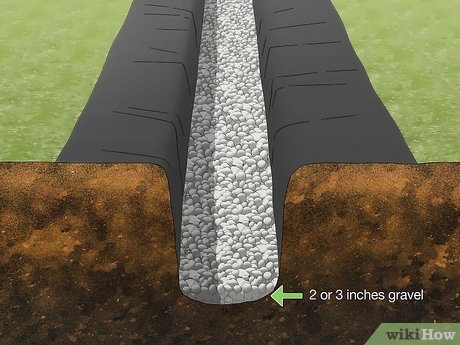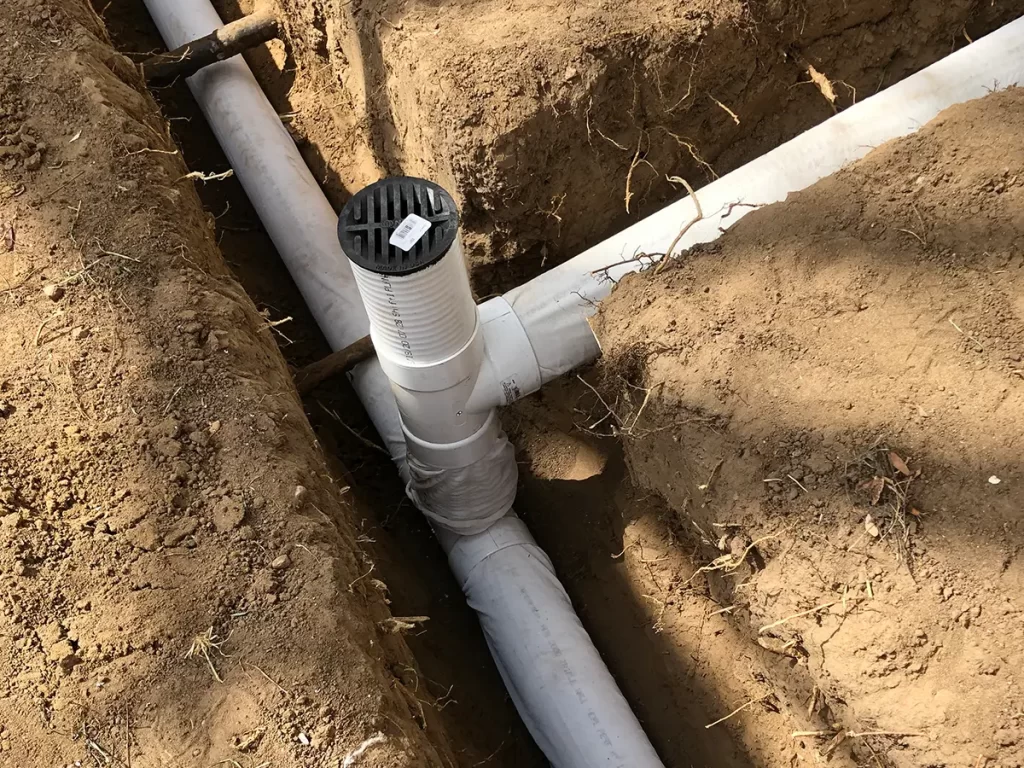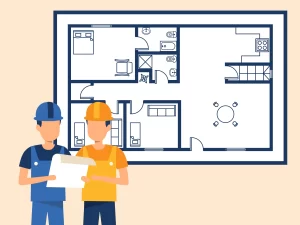
Understanding the Design and Installation of French Drains

French drains, with a history spanning over two centuries, stand as a proven and effective drainage system that yields remarkable results when implemented correctly. Widely utilized for draining water from fields, homes, and buildings, this system consists of a trench filled with gravel or rock, strategically designed to collect and redirect water away from the building foundation. Opting for a French drain proves to be a cost-effective, low-maintenance, and reliable solution for those seeking efficient water drainage. This article delves into the essential aspects of French drain design and installation, offering valuable insights for anyone considering this time-tested drainage solution.
What is a French Drain?
The French drain, originating in the 1800s and attributed to a Massachusetts farmer, remains a pivotal drainage system designed to redirect water away from building foundations. Comprising a trench filled with gravel or rock, this system effectively prevents moisture accumulation against foundation walls by establishing a drainage route away from the structure. French drains find widespread use in regions with heavy rainfall or poorly draining soil, serving as an essential solution to mitigate water-related issues around buildings.
How Does a French Drain Work?
At its core, a French drain serves the fundamental purpose of collecting and diverting water away from a building’s foundation. The mechanism involves the permeation of water through the trench filled with gravel or rock, guiding it towards the specified drainage area. Within the trench, a perforated pipe, situated at the base, efficiently gathers the water, facilitating its redirection away from the building. This seamless process underscores the effectiveness of a French drain in managing water flow and safeguarding the foundation from potential moisture-related issues.
Designing a French Drain
Designing a French drain involves careful consideration of several factors that play a crucial role in its effectiveness. The design process takes into account the size and slope of the property, the precipitation levels, soil type, and the location of water sources. The following steps outline the key elements of designing a French drain:
Step 1: Identify the drainage area Initiate the design process by pinpointing the areas requiring drainage, observing water pooling or accumulation after rainfall. Consider the property’s slope as it dictates the natural direction of water flow.
Step 2: Size the trench and pipe Calculate the dimensions of the trench and pipe based on the volume of water to be drained and the size of the designated area. Typically, a 4-inch diameter pipe is suitable for residential drainage. Ensure the trench is adequately deep to accommodate the pipe and the chosen gravel or rock.
Step 3: Choose suitable gravel or rock Selecting the right material for the trench is critical. The chosen gravel or rock should be clean, devoid of debris, and possess optimal drainage qualities. Commonly, gravel with a ¾-inch diameter is preferred for residential applications.
Step 4: Establish the trench gradient Determine the gradient of the trench, a crucial factor influencing water flow. Aim for a slope of at least 1%, ensuring a sufficient and effective movement of water within the trench.
By following these systematic steps, the design of a French drain can be tailored to the specific conditions of the property, optimizing its functionality and overall drainage performance.
Installing a French Drain
Installing a French drain involves a systematic process to ensure its proper functionality. Here is a step-by-step guide for the installation:
Step 1: Excavate the Trench Commence the installation by digging a trench where the French drain will be positioned. The trench should be of sufficient depth to accommodate both the perforated pipe and the layer of gravel or rock. A wider trench facilitates improved water flow.
Step 2: Layer Gravel or Rock After excavating the trench, introduce a layer of gravel or rock at the trench’s base. This foundational layer should be approximately 2 inches in depth.
Step 3: Position the Perforated Pipe Lay the perforated pipe atop the gravel or rock layer, ensuring it is level. Adjust the gradient if necessary to guarantee proper water flow.
Step 4: Cover with Gravel or Rock Cover the perforated pipe with an additional layer of gravel or rock, extending up to about 1 inch below the trench’s top.
Step 5: Backfill with Soil and Landscaping Material Fill the trench with soil and any desired landscaping material, ensuring that the trench is well concealed. There should be no visible indications of the drain for a polished appearance.
By following these steps, the French drain can be successfully installed, providing an efficient solution for redirecting water away from the designated area and safeguarding the building’s foundation.
Maintaining a French Drain
Maintaining your French drain is crucial to ensure its continued effectiveness. Here are some tips for proper maintenance:
Tip 1: Clear the Trench Regularly clear the trench of any debris, vegetation, or obstacles that might impede the water flow. This may include removing leaves, roots, or rocks.
Tip 2: Check the Perforated Pipe Inspect the perforated pipe to ensure it is not clogged with dirt or debris. If any blockages are found, clean the pipe to restore proper water flow.
Tip 3: Inspect the Sump Pump If your French drain is equipped with a sump pump, regularly inspect it to ensure proper functioning. Check for any signs of clogging or malfunction and address any issues promptly.
By following these maintenance tips, you can help ensure that your French drain remains in optimal condition, effectively diverting water away from the building’s foundation and preventing potential drainage problems. Regular inspections and proactive maintenance contribute to the long-term success of your drainage system.
Conclusion
French drains stand out as a reliable and efficient drainage system, offering years of dependable service. Their relatively straightforward installation process and cost-effectiveness make them a practical choice compared to other drainage solutions. Designing and installing a French drain involves meticulous consideration of the terrain, slope, and soil type to ensure optimal performance. Through proper installation and regular maintenance, a French drain becomes a valuable asset in preventing excess moisture and potential flooding, contributing to the overall well-being of your property.
Read about:small kitchen storage idea


